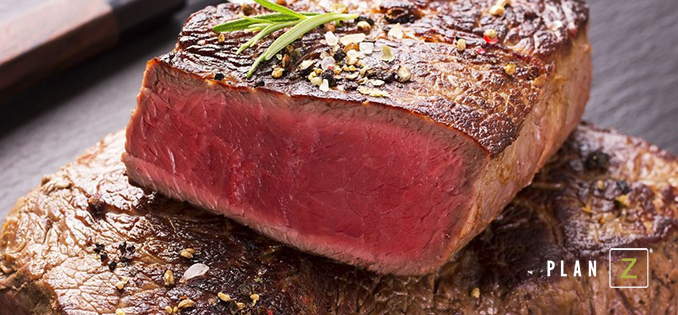The Perfect Tenderloin Steak
Editor's Note: Enjoy this previously published Zola classic!
For years I had a love-hate relationship with cast iron cookware. Now that I have more cooking experience, I adore cast iron.
I have to tell you my cast iron story.
Not long after I moved into my first apartment, my mother gave me two of her Lodge heavy-duty cast iron fry pans. She was getting new cookware and there was no room for them in her cupboard.
I thanked her for them and took them to my apartment where I stashed them in a cupboard. I had to look grateful for her gift, but I had no intention of using those ugly cast iron pans. I hated them since I was a little girl. When I was just taller than the kitchen table it was often my job to dry the larger cast iron skillet. I wasn’t even strong enough to hold it. I had to do the job with the pan sitting on the table. It was heavy; way too heavy for me, so I learned to hate that cast iron pan.
As I got older I saw those cast iron pans as the fuddy-duddy cookware. They were old. In fact, they were so old I think my mom got them from her mother-in-law. I considered them ancient and wanted nothing to do with them. I was a “modern cook.”
As I moved from one apartment to another, and eventually to two of my homes, I dutifully packed up those pans. Then I unpacked them and stashed them in a cupboard – again.
Finally, when I moved to Chicago almost 20 years ago, I behaved differently when I unpacked them. This time, I put them in a drawer that was easily accessible when I was cooking. Honestly, I can’t remember why. It might have been because of the way the kitchen was laid out. I know I did not put them in a convenient spot on purpose. It just happened.
And as happenstance plays its funny games, one night I pulled out my cast iron skillet and used it to sauté a steak. I remember a cooking technique I saw at a French restaurant. Their method was to sear the steaks in a hot cast iron pan and then finish them in the oven. I did the same thing that night and had the best home-cooked steak I had ever eaten. That started a trend.
I started cooking with cast iron almost every day. I discovered when I seared meat in my cast iron pan and finished it in the oven, the meat stayed juicier. It didn’t matter if it was steak, pork, or chicken. Same wonderful results...
Read the full column at PlanZDiet.com
The Perfect Tenderloin Steak
There’s nothing I like more than a seared and roasted steak while I am on the ZReduction phase of Plan Z. I learned this steak method by asking a French restaurant how they did theirs. I have pretty much perfected my technique using a cast-iron skillet.
Servings: Serves 2 (can be doubled easily)
Ingredients:
2 six-ounce tenderloin steaks. Ask your butcher for center-cut steaks. Those will be whole (no strings holding them together). They are also the most tender and just the right size. They should be 1.5 to 2 inches thick.
olive oil spray
sea salt and pepper to taste
Instructions:
Heat your oven to 375 degrees.
Take out your cast iron pan and begin to heat it on the stove.
Spray your steaks with olive oil spray on both sides. Season with sea salt and pepper
A couple of notes: Many experts say to take the steak out of the refrigerator and let it get to room temp before you cook it. I don’t bother with that but I do try to take them out maybe 10 minutes ahead.
Some experts say don’t season the steak until it’s cooked. I go the opposite way with this too because I find that searing the meat with the salt and pepper crust makes it taste more like official steakhouse cooking.
Put the steak in your cast iron pan and cook it on medium-high for 3 minutes. Do NOT mess with it. No moving it around. You want a solid sear on the first side so it tastes like a steakhouse made it.
Then flip the steak and put it in your oven at 375 degrees. If you have a convection oven put it on 375 degrees convection.
Let the steak roast at 375 for approximately 12 minutes. Check it with your Insta-read meat thermometer. When it’s about 119 to 120 degrees, it’s done (if you like your steak medium-rare). Let it sit on the counter in the pan for about 5 to 7 minutes more. The steak will continue to cook and reabsorb some of the juices.
A couple more notes: if your steak is thinner, adjust the cooking time down a bit.
If you like your steak more well done, just add 3-minute increments and check again for how done you like it. For medium, you want to take it out at about 125-130 degrees because, again, it will continue to cook while it sits in the pan after you take it out of the oven.
Enjoy!
Cheers,
Zola







